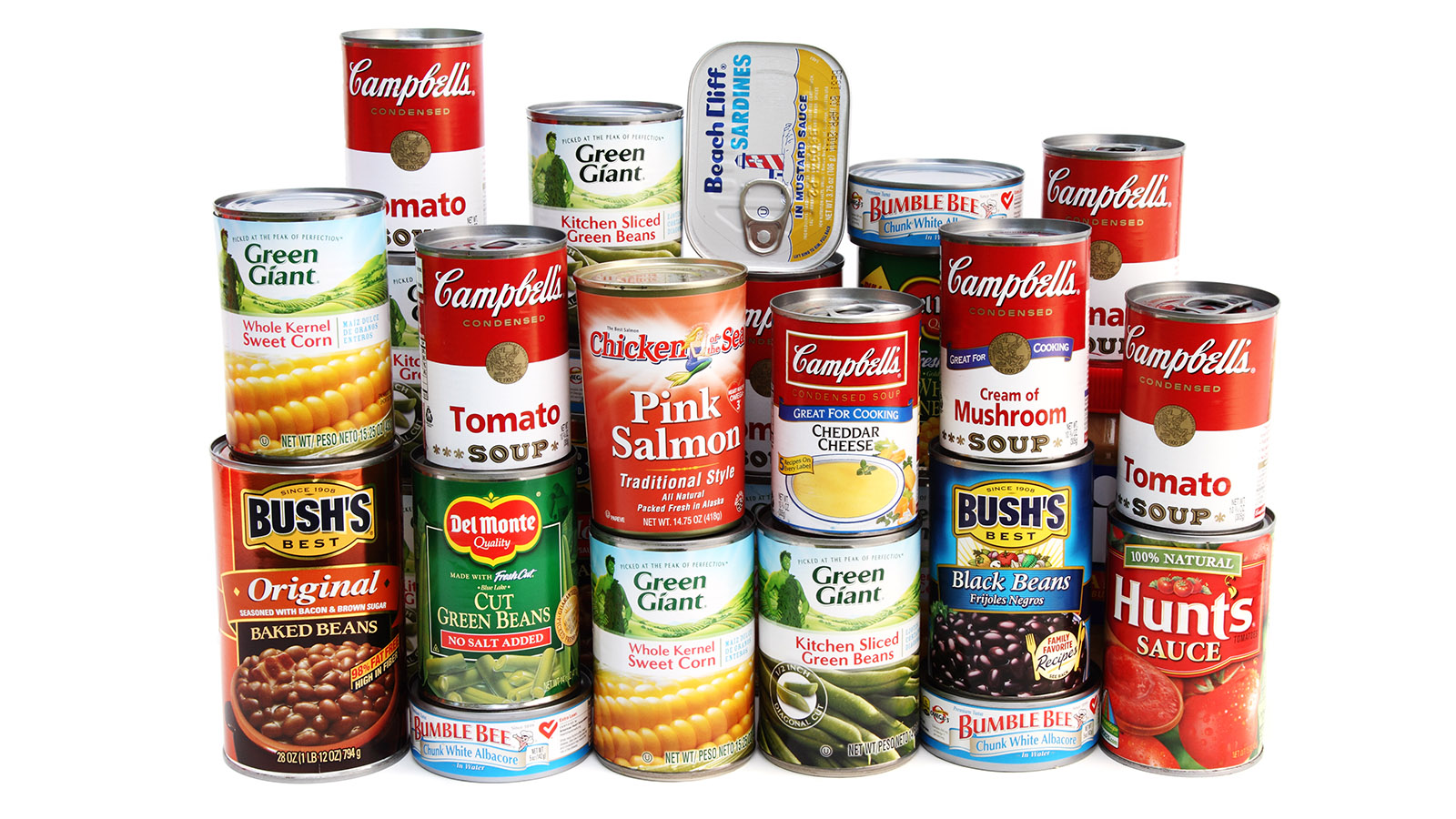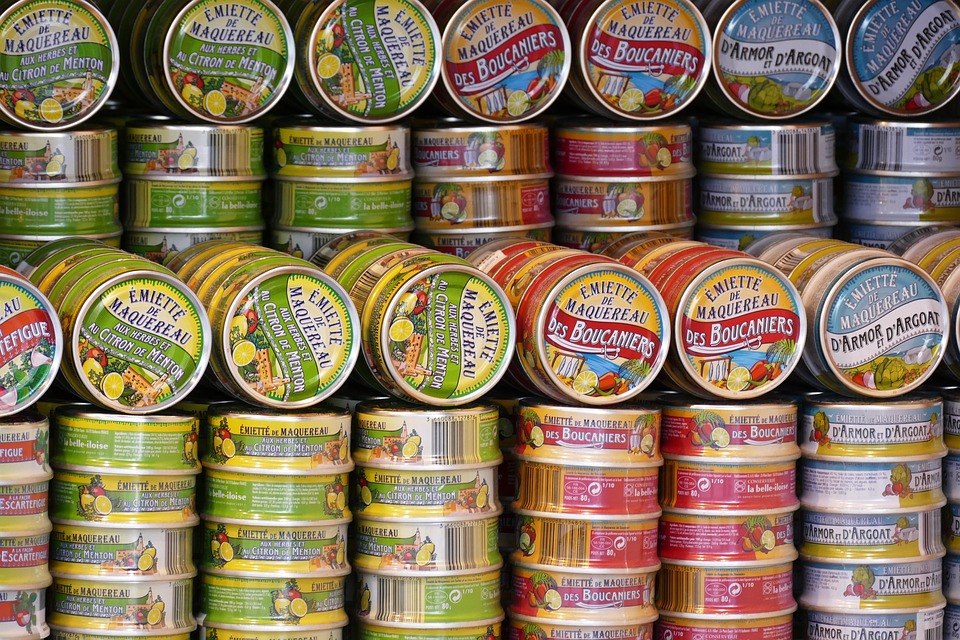Canned packaged goods are food items that are preserved, processed, and packaged in metal cans or other airtight containers. These products are typically long-lasting and have a longer shelf life compared to fresh foods. Canned goods can be found in most grocery stores and can include a variety of foods such as fruits, vegetables, beans, soups, meats, and seafood.
They are often a convenient and cost-effective option for consumers because they can be stored for long periods of time without refrigeration and can be quickly and easily prepared for meals. However, it’s important to pay attention to the expiration date and any other instructions or warnings on the label before consuming canned goods.
Some common examples of Canned Packaged Goods include:
- Canned packaged goods are a popular food item available in most supermarkets.
- These goods are foods that have been processed and preserved in airtight containers.
- The most common canned goods include vegetables, fruits, soups, meats, and seafood.
- The canning process involves heating the food to a high temperature to kill bacteria and then sealing it in an airtight container.
- This process helps to prevent spoilage and allows the food to have a long shelf life.
- Canned goods are convenient for quick meals and emergency situations.
- They are also a cost-effective way to get essential nutrients.
- Canned goods are available in a variety of sizes, from small individual portions to large family-sized cans.
- Many canned goods are also available in different varieties, such as low-sodium or organic options.
- Canned goods are a staple in many households, especially during times of economic hardship.
- They are also popular for camping, hiking, and other outdoor activities.
- Some canned goods, such as beans and canned fish, are a good source of protein and can be a part of a healthy diet.
- Canned fruits and vegetables are a convenient way to get essential vitamins and minerals.
- Canned goods are also a popular ingredient in many recipes, such as soups, stews, and casseroles.
- However, canned goods can also be high in sodium and preservatives.
- Some canned goods may also contain added sugars or artificial flavors.
- It’s important to read labels carefully and choose healthier options when possible.
- Canned goods should be stored in a cool, dry place and checked for any signs of damage before consuming.
- Canned goods should be consumed before their expiration date to ensure their quality and safety.
- Overall, canned packaged goods are a convenient and versatile food item that can be a part of a healthy and balanced diet.
Benefits of Canned Packaged Goods

- Convenience: Canned goods are very convenient since they can be stored for a long time without the need for refrigeration or special storage conditions. This makes them perfect for camping trips, emergency preparedness kits, or quick and easy meals at home.
- Shelf Life: Canned goods have a long shelf life, usually between 2 to 5 years depending on the product. This makes them ideal for stocking up on non-perishable foods and for reducing food waste since they can be used long after the purchase date.
- Nutritional Value: Canned goods can retain their nutritional value, especially if they are canned at the peak of freshness. Additionally, canned fruits and vegetables can be a great way to get essential vitamins and minerals when fresh produce is not available or too expensive.
- Cost-effective: Canned goods are usually cheaper than fresh produce and meats, and they are often on sale, which makes them more affordable for many people.
- Safe and hygienic: Canning is a safe and hygienic way to preserve food, which means that canned goods are less likely to contain harmful bacteria or other contaminants.
- Versatile: Canned goods can be used in a wide variety of dishes, such as stews, soups, casseroles, and pasta dishes. They are also a great addition to salads and can be used as a quick and easy side dish.
Drawbacks of Canned Packaged Goods
Canned packaged goods are a convenient way to store food for a long time, but they also have some drawbacks. Here are some of the most common drawbacks of canned packaged goods:
Nutritional Value: Canned packaged goods are often high in sodium and preservatives, which can lead to health problems such as high blood pressure and kidney disease. They may also lose some of their nutritional value during the canning process.
Quality: The quality of canned food can be affected by the canning process. For example, the texture of vegetables can become mushy or soft, and the flavor may be altered.
Cost: Canned food can be more expensive than fresh food, especially if you opt for premium or organic varieties.
Environmental Impact: The production, transportation, and disposal of canned food can have a significant environmental impact. Canning requires a lot of energy, and the cans themselves can be difficult to recycle.
Safety Concerns: If canned food is not stored properly or if the can is damaged, it can become contaminated with bacteria that can cause food borne illnesses.
Types of Canned Packaged Goods

Canned packaged goods are a popular choice for many people as they offer convenience and a long shelf life.
Here are some common types of Canned Packaged Goods:
- Canned vegetables: Canned vegetables are a convenient way to add nutrients to your meals. Popular canned vegetables include corn, peas, green beans, carrots, and tomatoes.
- Canned fruits: Canned fruits are a great way to enjoy seasonal fruits all year round. Popular canned fruits include peaches, pears, pineapple, and mixed fruit.
- Canned soups: Canned soups are a quick and easy meal option. Popular canned soups include chicken noodle, tomato, and cream of mushroom.
- Canned meats: Canned meats are a good source of protein and can be used in a variety of dishes. Popular canned meats include tuna, chicken, beef, and spam.
- Canned fish: Canned fish is a good source of protein and omega-3 fatty acids. Popular canned fish include salmon, tuna, and sardines.
- Canned beans: Canned beans are a great addition to soups, stews, and chili. Popular canned beans include black beans, kidney beans, and chickpeas.
- Canned pasta: Canned pasta is a quick and easy meal option. Popular canned pasta dishes include spaghetti and meatballs, ravioli, and lasagna.
- Canned sauces: Canned sauces are a convenient way to add flavor to your meals. Popular canned sauces include tomato sauce, Alfredo sauce, and pesto sauce.
- Canned fruits and vegetables in juice: These canned goods are packed in natural juices, making them a healthier option than those packed in syrup.
- Canned baby food: Canned baby food is a convenient way to provide your little one with a variety of nutrients. Popular canned baby foods include pureed fruits, vegetables, and meats.
Conclusion
Canned packaged goods have been a popular food preservation method for over 200 years. They are a convenient and long-lasting food option that can be stored for months or even years without refrigeration.
Canned packaged goods can provide important nutrients and are often used in emergency situations or when fresh food is not available. However, they can also be high in sodium and preservatives, and some people may be concerned about the potential health risks associated with consuming canned food that has been in storage for a long period of time.
Overall, canned packaged goods can be a useful and convenient addition to a balanced diet. It is important to check the labels and nutritional information on canned foods to ensure that they fit within your dietary needs and preferences. Additionally, it is recommended to consume canned food within the recommended expiration dates and to properly store them to minimize any potential risks associated with long-term storage.
You may also be interested in:
1. Blooket | How to blooket play Guide 2023
2. What we can expect from the tech industry in 2023
3. Major Causes Of Jackknife Car Accidents In Atlanta
